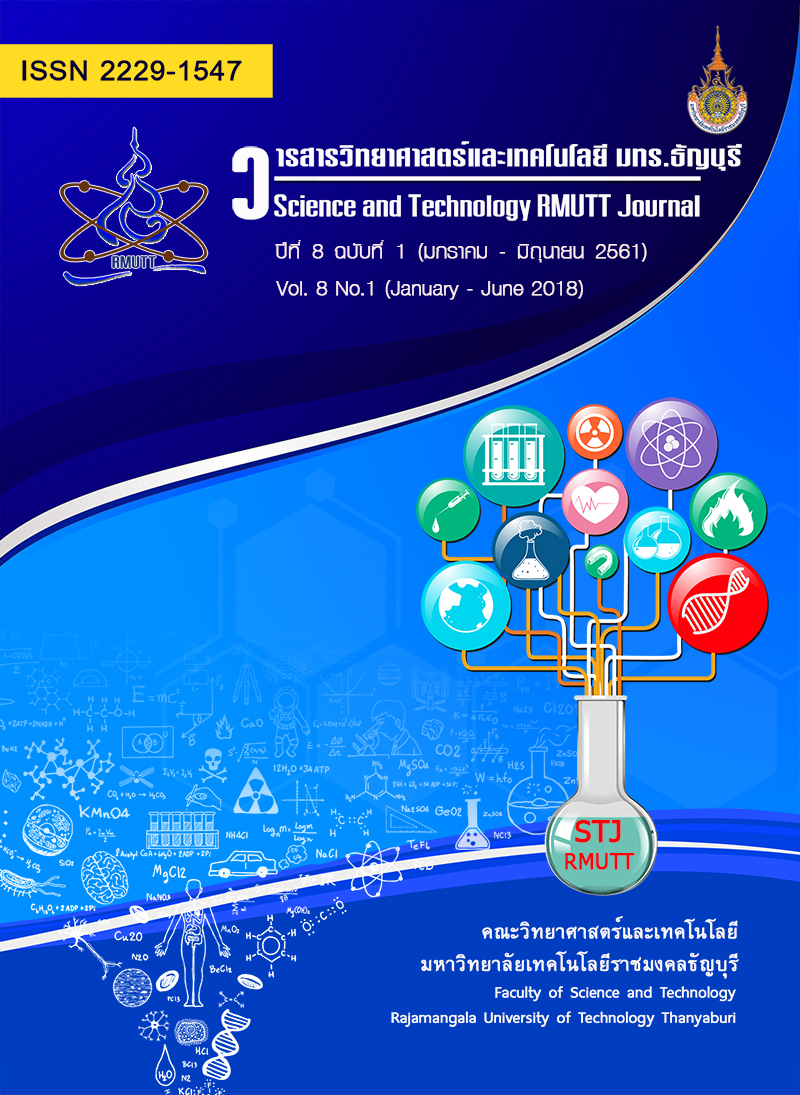Preparation of Porous LiAl5O8 by Reaction bonded sintering
Main Article Content
Abstract
The porous LiAl5O8 was fabricated by the reaction bonded sintering process. Powders of Al2O3 (0.3mm) and Li2O (1.0 mm) were used as starting materials. They were mixed with ratios of Al2O3 and Li2O in 5:1, 7:3 and 5:5 by mole in the water for 6 hours and were dried at 100oC for 10 hours. The mixed powder was pressed to form a 10 mm diameter disk specimen. The disk specimens were then sintered at temperatures of 1300oC for 2 hours. Specimens sintered at 1300oC for two hours formed two kinds of lithium aluminates, namely LiAlO2, and the LiAl5O8 in the mixture with the ratios of 7:3 and 5:5. The mixture with the ratio of 5:1 formed only the LiAl5O8 phase. The specimen mixed by 5:1 molar ratio had a homogeneous grain size and a pore size distribution. The Li2O reacted completely with the Al2O3 even below the evaporation temperature of the Li2O. In the specimen mixed by 5:5 ratio, the pore of specimens was larger and longer which would be resulted from the evaporation of Li2O during the sintering process. The thermal expansion coefficient of the specimen mixed by 5:1 molar ratio was lower than that of the specimen with other mixing ration.
Article Details
References
Corbin S., Apte P. Engineered porosity via tape casting, lamination and the percolation of pyrolyzable particulates, J. Am. Ceram. Soc. 82 (1999) 693-701.
Chandrappa G., Steunou N, Livage J. Macroporous crystalline vanadium oxide foam, Nature (2002) 702.
Sakka Y., Tang F., Fudouzi H., Uchikoshi T. Fabrication of porous ceramics with controlled pore size by colloidal processing, Sci. Tech. Ad. Mats. (2005) 915-920. 547
Holland B., Blanford C, Stein A. Synthesis of macroporous minerals with highly ordered three-dimensional arrays of spheroidal voids, Science 281 (1998) 538-540.
Davis M. Ordered porous materials for emerging applications, Nature 417 (2002) 813-821.
Tang F., Uchikoshi T., Sakka Y. A practical technique for the fabrication of highly ordered macroporous structures of inorganic oxides. Mats. Res. Bull. 41 (2006) 268-273.
Engin N., Tas A. manufacture of macroporous calcium hydroxyapatite bioceramics J. Eur. Ceram. Soc. 19 (1999) 2569-2572.
Roncari E., Galassi C., Craciun F., Capiani C., Piancastelli A.,microstructural study of porous piezoelectric ceramic s obtained by different technique, J. Eur. Ceram. Soc. 21 (2001) 409-417.
Yang J., Zhang G., Ohji T. Porosity and Microstructure Control of Porous Ceramics by Partial Hot Pressing, J. Mater. Res. 16 (2001) 1916-1918.
Deng Z., Tanaka Y., Liu Y., Liu Z, Sakka Y., Processing of Silicon Carbide-Mullite-Alumina Nanocomposites J. Ceram. Soc. Jpn. 112 (Suppl.) (2004)s203- s204.
Deng Z., Tanaka Y., Sakka Y., kagawa Y. Modification Al particle surfaces by gamma-Al2O3 and its effect on corrosion behavior of Al, J. Mater. Res. 20 (2005) 672-679.
The AcerS and NIST, Phase equilibra diagrams database versions 3.1
Shuqiang Ding, Yu-Ping Zeng, Dongliang Jiang “In-situ reaction bonding of porous SiC ceramics” Mats. Charac. 59 (2008) 140–143.


